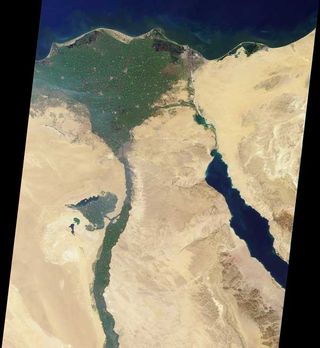
NASA Satellite Monitoring Iceland Volcano -Worried More Massive Eruptions to Follow
Within 24 hours of the eruption, NASA's JPL team confirmed the volcano was emitting more than one billion watts of energy - enough to power 40,000 passenger cars. It has discharged more than six tons of lava per second. Data that used to take three weeks to gather can now be had in less than 24 hours, according to researchers at the Jet Propulsion Laboratory.
The team is continuing to monitor this region because they are concerned that the eruption might precede another larger eruption at the nearby Katla volcano, according to the lead scientist at JPL Ashley Davies.
Volcanic eruptions in high-latitudes can greatly alter climate and distant river flows, including the Nile, according to a study funded in part by NASA. Researchers found that Iceland's Laki volcanic event, a series of about ten eruptions from June 1783 through February 1784, significantly changed atmospheric circulations across much of the Northern Hemisphere creating unusual temperature and precipitation patterns that peaked in the summer of 1783, including far below normal rainfall over much of the Nile River watershed and record low river levels.
The study provided new evidence that large volcanic eruptions north of the equator often have far different impacts on climate than those in the tropics.
"While considerable research has shown that eruptions in the tropics influence climate in the Northern Hemisphere winter, this study indicates that eruptions in high-latitudes produce changes in atmospheric circulation in the Northern Hemisphere summer," said Luke Oman, Rutgers University, New Brunswick, N.J.
To see what effect major high-latitude volcanic eruptions have on rainfall and river levels, the researchers used records on the height of the Nile River that date back to 622 A.D. Record low Nile River water levels occurred in 1783-1784 following the Laki event. Similarly low levels were observed after the Mount Katmai, Alaska, eruption in 1912, when the Niger River was also at a record low. And in 939 A.D. there was also low Nile River flow following the Eldgjá eruption in Iceland. "Our analysis found there is less than a 3 percent chance that the Laki and Katmai low river flow events could be attributed to natural climate variability," said Oman.
Using a sophisticated computer model developed by NASA's Goddard Institute for Space Studies, New York, the researchers linked the Laki eruptions to a cascade of effects that rippled across much of the Northern Hemisphere, altering surface temperatures that ultimately resulted in much below normal rainfall over the Sahel of Africa and record low water levels on the Nile River for up to a year. The Sahel is a stretch of land from the Atlantic Ocean to the "Horn of Africa" that includes the Sahara Desert and savanna areas with sparse vegetation."These findings may help us improve our predictions of climate response following the next strong high-latitude eruption, specifically concerning changes in temperature and precipitation," said Oman. "Many societies are very dependent on seasonal precipitation for their livelihood and these predictions may ultimately allow communities time to plan for consequences, including impacts on regional food and water supplies."
The Laki event had a significant impact on the climate because it released large amounts of sulfur dioxide into the atmosphere. When combined with water vapor, the gas formed into tiny particles called aerosols that reduced incoming solar radiation, cooling the average temperature over Northern Hemisphere land masses by as much as 3 degrees Celsius (5.4 degrees Fahrenheit) in the summer of 1783, as simulated with the computer model. Tree ring data also showed significantly reduced tree growth in the summer of 1783, indicative of the coolest summer of the last 400 years in northwestern Alaska, while tree growth in parts of Siberia was the least in 500-600 years.
Jason McManus
Source: NASA/Goddard Space Flight Center
April 15, 2010

